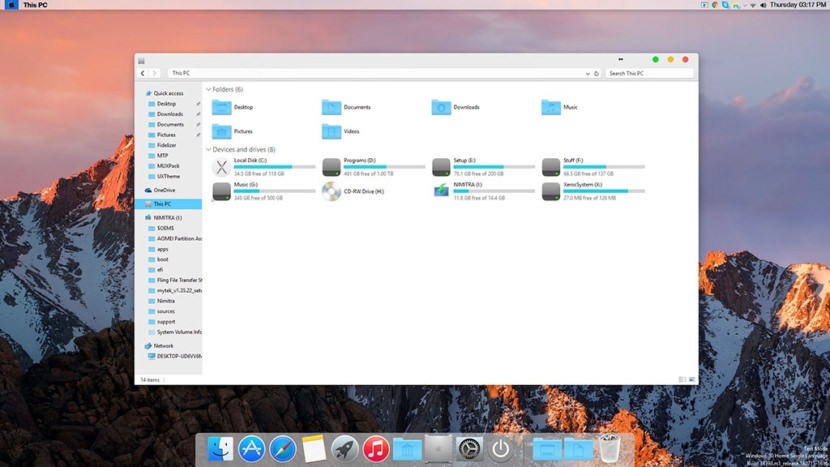


- #Vnc viewer mac os x yosemite apk
- #Vnc viewer mac os x yosemite full
- #Vnc viewer mac os x yosemite pro
- #Vnc viewer mac os x yosemite software
- #Vnc viewer mac os x yosemite password
Full desktop visibility even with soft keyboard extended Full rotation - use the central lock rotation on your device to disable rotation Dynamic resolution changes, allowing you to reconfigure your desktop while connected, and control over virtual machines from BIOS to OS Force Landscape, Immersive Mode, Keep Screen Awake Right and middle-dragging if you don't lift the first finger that tapped One finger tap left-clicks, two-finger tap right-clicks, and three-finger tap middle-clicks Multi-touch control over the remote mouse.
#Vnc viewer mac os x yosemite pro
Multi-factor (two-factor) SSH authentication in the Pro version
#Vnc viewer mac os x yosemite password
Master password support in the Pro version Windows, Mac, Linux, BSD, or any other OS with a VNC server installed Finally, if you are an oVirt, RHEV, or Proxmox user, check out Opaque.īVNC is a secure, open source VNC client. In addition, a SPICE client named aSPICE is available. If you need an RDP application, please search for aRDP in Google Play. See below for instructions for Windows, Linux, and Mac OS X. !forum/bvnc-ardp-aspice-opaque-android-bb10-clients If bVNC doesn't work for you, before writing a review, please post your question in the forum:
#Vnc viewer mac os x yosemite software
Please support my hard work and GPL open-source software by giving me a high rating and telling all your friends about this project! You can also donate to the project by getting bVNC Pro.
#Vnc viewer mac os x yosemite apk
If you set the special value -e none, escaping is disabled and the session is fully transparent.BVNC: Secure VNC Viewer Описание Последняя bVNC: Secure VNC Viewer apk Скачать. The escape character can be changed using the command line option -e. If you want to simply enter a tilde at the beginning of a line, you have to double it: ~~.~# gives a list of forwarded connections in this session.~ followed Ctrl-Z suspends the session,.Entering ~? during a session should give you a list. OpenSSH, for example, offers other escape sequences besides ~. So the following sequence will in most cases terminate an SSH session: To be sure to enter the escape character at the beginning of an input line, you should press Enter first. If you want to terminate an interactive OpenSSH session which is stuck and cannot be exited by entering exit or Ctrl D into a shell on the remote side, you can enter ~ followed by a dot. The default SSH escape character is ~, entered at the beginning of a line. Most SSH implementations implement an escape character for interactive sessions, similar to telnet's Ctrl-] combination. SSH Escape Character and Disconnect Sequence You don't want to learn to invoke as a feature something that is documented as a bug and then later "fixed." Doing the semantically correct thing will continue to be supported. You want to know that you're doing semantically the correct thing, as well as knowing that it works. If N is omitted, the exit statusĬiting and quoting reference sources is to provide further evidence for what would otherwise be a perhaps demonstrable assertion of fact, as well as inform the user where more relevant information may be stored. There is nothing special about exit to ssh, it's just a way to exit the shell, which results in closing the ssh session: $ type exitĮxits the shell with a status of N. ~v Increase the verbosity (LogLevel) when errors are being written ~V Decrease the verbosity (LogLevel) when errors are being written ~R Request rekeying of the connection (only useful if the peer PermitLocalCommand option is enabled in ssh_config(5). !command allows the user to execute a local command if the Remote and -KDport for dynamic port-forwardings. ItĪlso allows the cancellation of existing port-forwardings with Currently this allows the addition of portįorwardings using the -L, -R and -D options (see above). ~B Send a BREAK to the remote system (only useful if the peer sup‐ ~& Background ssh at logout when waiting for forwarded connection The supported escapes (assuming the default ‘~’) are: The escapeĬharacter can be changed in configuration files using the EscapeCharĬonfiguration directive or on the command line by the -e option. Must always follow a newline to be interpreted as special. When a pseudo-terminal has been requested, ssh supports a number ofįunctions through the use of an escape character.Ī single tilde character can be sent as ~~ or by following the tilde byĪ character other than those described below. Gives us the SSH documentation, which has the following section on escape characters: We could learn this information from a careful reading of the man page. The first option should be intuitive, but how do we know the latter option? and ssh should immediately close and return you to your command prompt. in the case where you have a bad connection and the shell is unresponsive, hit the Enter key, then type ~.with the shell builtin command, exit, followed by Enter, or.closing the shell session will usually exit, for example:.


 0 kommentar(er)
0 kommentar(er)
